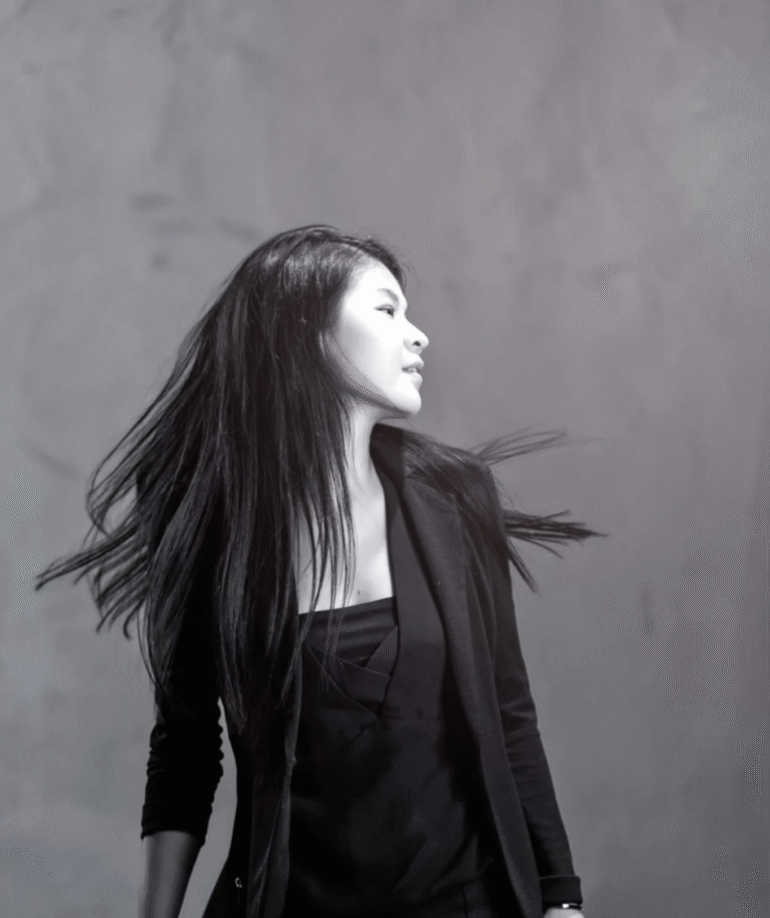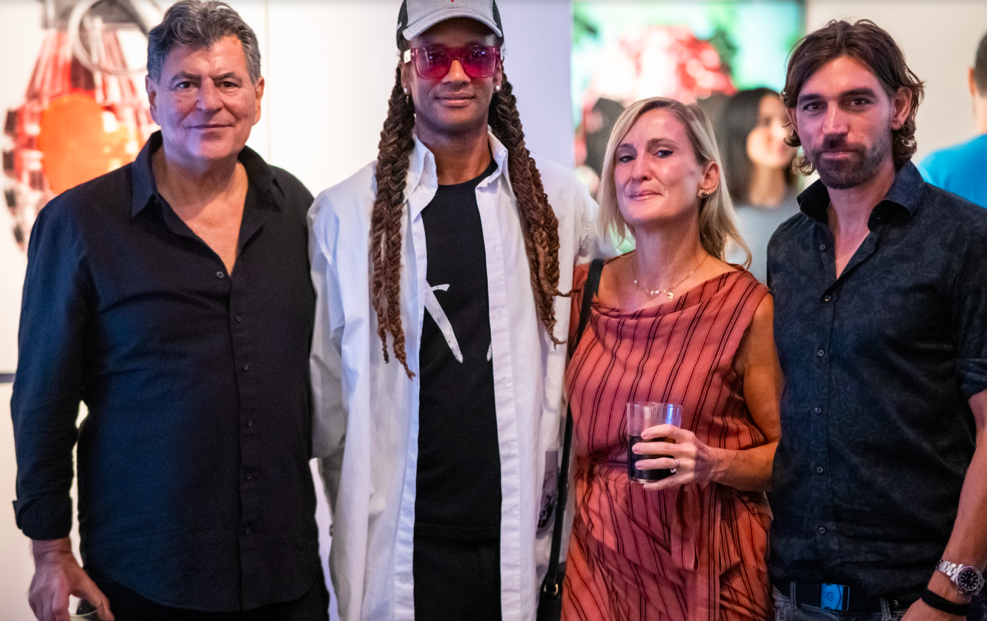Mindfulness meets futuristic immersive experiences in the innovative art of Amelia Peng.
Artist and textile designer Amelia Peng blends music and textiles with technology in her multi-disciplinary practice. Since graduating in MA Textiles from the Royal College of Art in 2023, Peng is already carving out a stellar path in the art and design worlds with her innovative, boundary-pushing combination of art, craft, mindfulness and science.
One of her most seminal works to date is Inner Peace, which took place during London Design Biennale in 2023 and involved the transformation of a virtual waterfall into a spiritual, sensory meditation on universal empathy. Peng recently staged an interpretation of Inner Peace at the Saatchi Gallery in ArtEvol2025 (from 12th to 19th September, 2025).
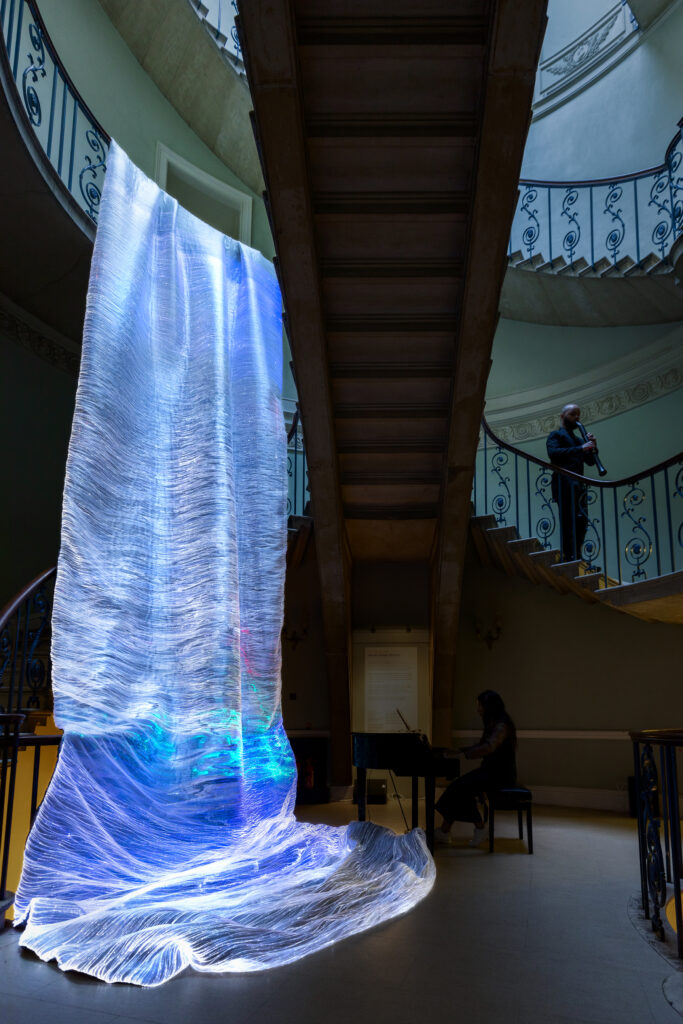
The Inner Peace installation was originally presented within the meticulously reconstructed Nelson Staircase at London’s iconic Somerset House during London Design Biennale, and demonstrated Peng’s ability to create immersive experiences where craft, history and tech intersect with human emotion. Once destroyed during World War II, the Nelson Staircase was rebuilt in the 1950s as a symbol of resilience and provided a poignant architectural backdrop that imbues Peng’s work with historical gravitas and a sense of continuity between past and present.
Inner Peace was the culmination of a rare cross-disciplinary collaboration that saw Peng collaborate with composers from the Royal College of Music, the Specialist Modelling Group at Foster + Partners, and Italian textile weaver Dreamlux. The result was a cross-pollination of expertise from art, music, science and technology. The immersive experience, dubbed “Music–Mind–Textile”, invites audiences to engage with the installation as active participants. By wearing EEG headsets, visitors’ brain waves are recorded and translated in real time into chromatic shifts across a fiber-optic textile spanning 10 meters in length and 3 meters in width, creating a responsive and living environment that reflects both focus and relaxation.
The textile itself constituted a technical marvel: for it comprised of two layers–a translucent organza front and jacquard back–hand-woven with nearly 76 kilometers of fiber optics and integrated with over 190 LEDs. The front layer responded to the music–whether pre-recorded or performed live by composers at the Royal College of Music–while the back layer visualized the audience’s brain activity. Green and blue hues indicate relaxation, whereas amber and red signify heightened focus, creating a dynamic “waterfall” of light that moves through the stairwell in seamless undulations. The interplay of these layers, combined with the architecture of the stairwell, evoked both the calming effects of flowing water and the continuous flow of human emotion.
As a conceptual starting point for Inner Peace, Peng was inspired by theoretical physicist Michio Kaku and his 2014 text The Future of the Mind, in which he explores the possibilities of understanding, mapping, and influencing human consciousness.
Peng translates Kaku’s ideas into a tangible, multi-sensory experience in the form of her artwork Inner Peace,demonstrating that art can act as a bridge between science and the human spirit. The installation positions empathy as something that is not only thematized but structurally enacted: it is made visible, measurable, and shared through the responsive interactions of audience, music, and material.
What sets Peng’s work apart is its embodied and collective approach to mindfulness. Visitors are not passive observers but co-creators of the sensory field. By participating in the experience, they contribute to a communal resonance–a living reflection of the human capacity for attunement and connection. Musicians themselves are connected to the EEG system, allowing their inner states to feed back into the installation, blurring boundaries between performer, audience, and environment. The installation thus becomes a shared organism, a mediator of emotional exchange and a tangible symbol of human interconnectedness.
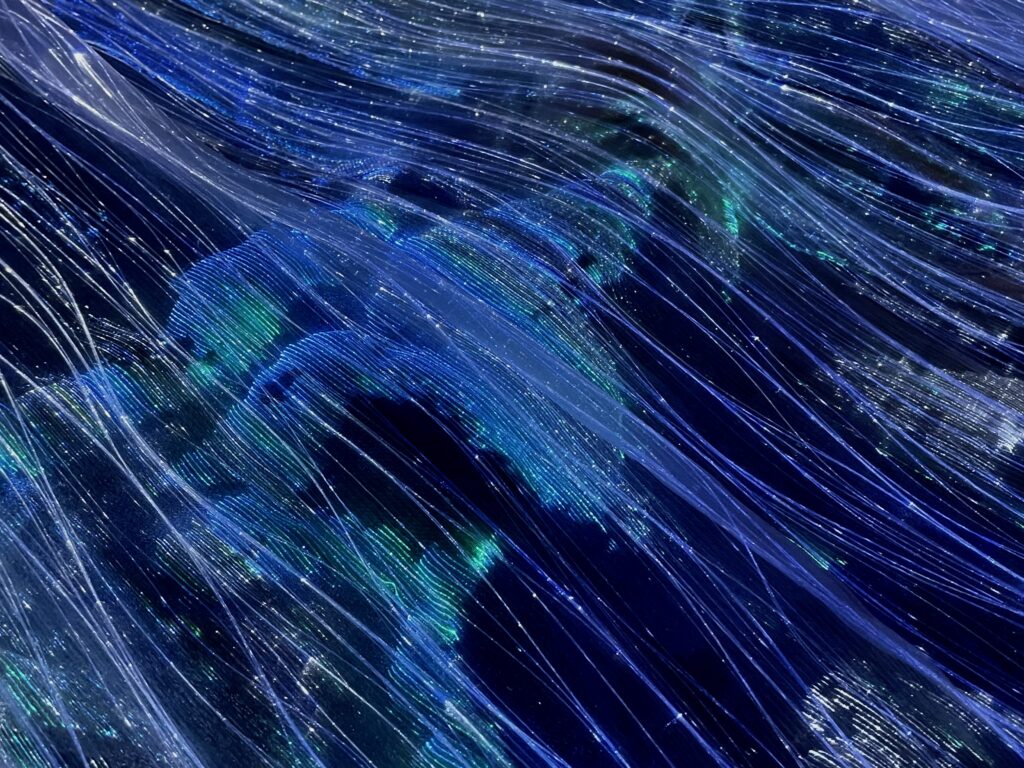
Peng’s Inner Peace project and her artistic practice in general are notable for a commitment to inclusivity and neurodiversity. With contributions from over ten nationalities and expertise spanning neuroscience, data science, architecture, and textile design, Inner Peace exemplifies the potential of interdisciplinary collaboration. It aligns with the United Nations Sustainable Development Goals (SDG) 2030, promoting social awareness, equity, and mindfulness through immersive art. In doing so, Peng demonstrates how design and technology can actively support human flourishing while engaging audiences in ethical and empathetic reflection.
Peng’s artworks push the boundaries of what is possible when art meets science, tech and textiles. Beyond the technical and conceptual achievements Peng demonstrated through her visualisation of Inner Peace, is a poetic and emotional resonance. As visitors ascend or descended the stairwell, the cascading lights mirror the journey of the human psyche, its tensions, relaxations, and oscillations. The installation encourages a deep, introspective engagement while simultaneously highlighting the collective act of witnessing and being witnessed. In this way, it reframes survival and resilience not as solitary endeavours but as shared, attuned processes in which human connection and empathy are central.
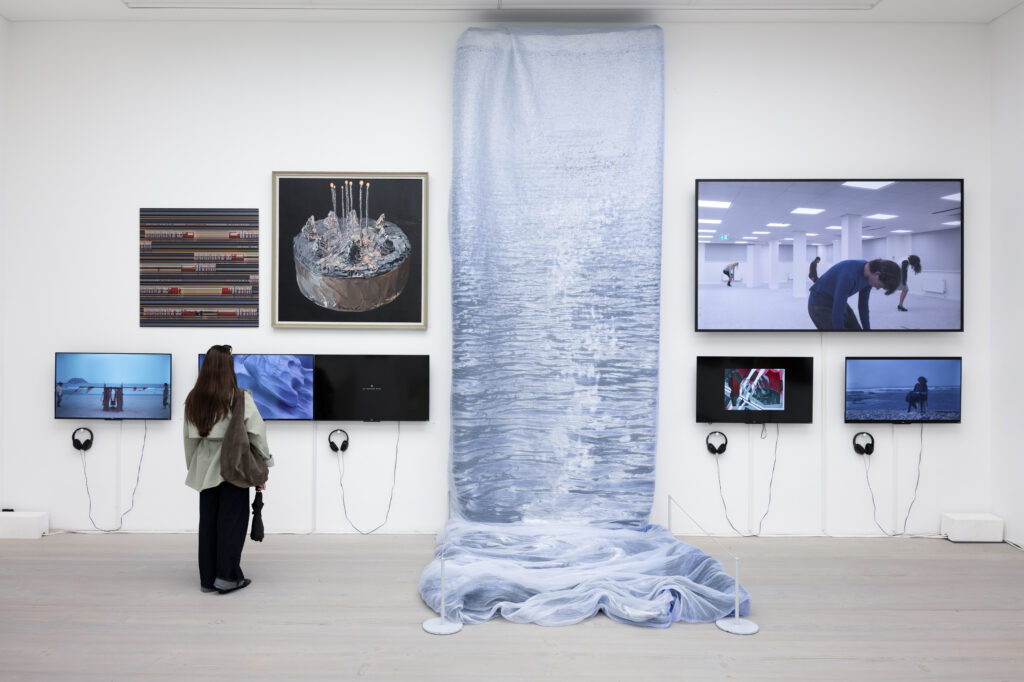
At the heart of Peng’s practice is a commitment to attunement, rebuilding and the interweaving of memory with contemporary creativity. By situating her responsive waterfall within the historic Somerset House staircase, Peng merged history with speculative futures, honoring both collective memory and the potential for emotional evolution.
From a material perspective, the hand-woven fiber optics reveal a dedication to precision and craftsmanship that is rare in contemporary installations. The resulting effect was a luminous choreography, in which human emotions, music, and textile respond in a continuous, flowing dialogue.
Peng’s artistic practiced is exemplified by Inner Peace, which challenges traditional notions of art and design. She dissolves disciplinary boundaries and invites us to reconsider what constitutes an artistic medium. Here, textiles are not inert; they are living interfaces. Music is not merely performative; it is interactive and responsive. The audience is not passive; it is active and integral. By synthesizing these elements, Peng offers a new paradigm in which peace, empathy, and mindfulness are experienced, enacted, and shared, rather than simply observed or conceptualized.
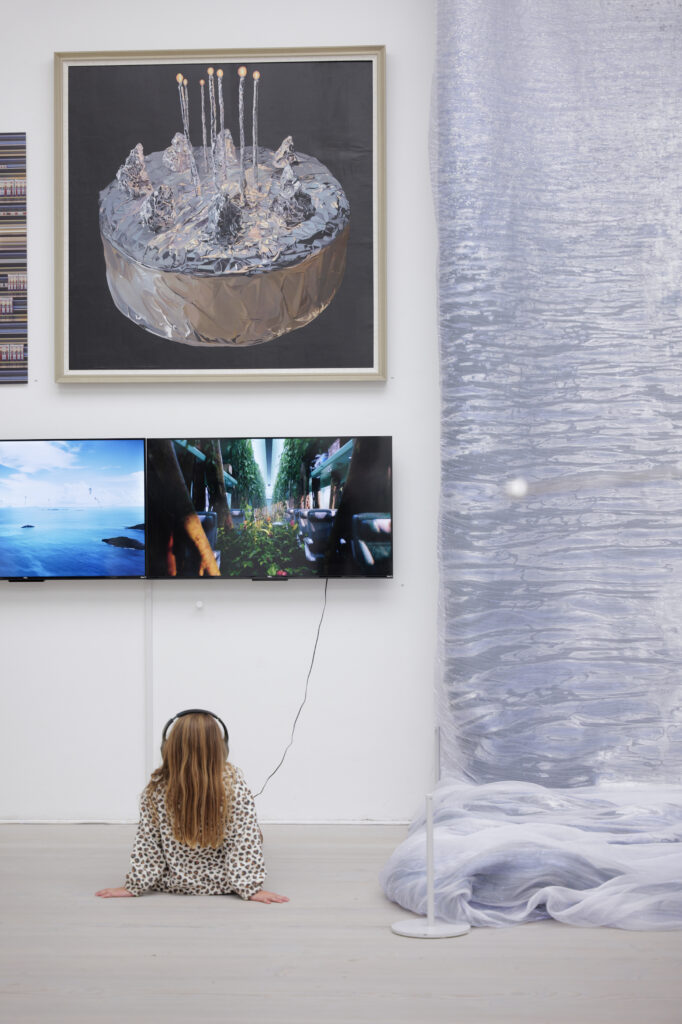
In an age marked by social fragmentation and digital detachment, Inner Peace serves as both meditation and manifesto. It demonstrates the capacity of art and design to cultivate introspection, human connection, and cross-cultural collaboration. It shows that resilience is not simply surviving historical trauma but embracing vulnerability and shared experiences. Between each flicker of light and each note of music, Peng’s installation invites us to inhabit a space where history, science, craft, and human emotion coalesce.
Peng’s art stands as a testament to the power of interdisciplinary collaboration, technical precision, and poetic vision. It exemplifies how contemporary art can transcend aesthetic boundaries to create experiences that are both emotionally profound and socially resonant. Her work is not merely a visual spectacle; it is a living architecture of empathy, offering a model for how art, technology, and human consciousness can converge to cultivate mindfulness, connection, and hope for a more compassionate future.
For more information on Amelia Peng visit: https://www.ameliapeng.com


